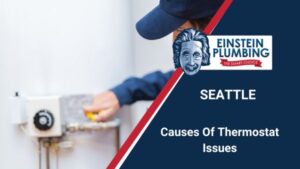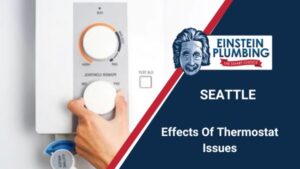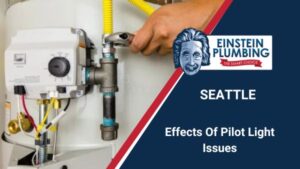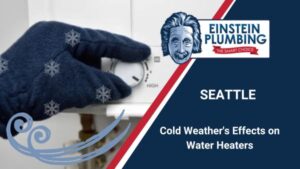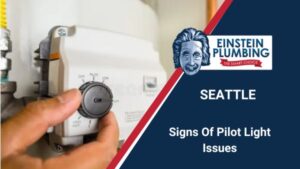Tankless water heaters are a revolutionary solution for households seeking energy efficiency and on-demand hot water. However, to maintain their optimal performance, regular maintenance is essential, and a key aspect of this is descaling. A tankless water heater descaling kit is a crucial tool in preventing mineral deposits that can accumulate over time and affect the efficiency and lifespan of the appliance. In this blog post, we will delve into the importance of descaling, factors to consider when choosing a descaling kit, and provide detailed step-by-step instructions on how to use it effectively.
What is A Tankless Water Heater Descaling Kit?
A Tankless Water Heater Descaling Kit is a specialized set of tools and solutions designed to remove mineral deposits, commonly known as limescale, from tankless water heaters. These deposits, primarily composed of calcium and magnesium, can accumulate over time and adversely affect the efficiency and performance of the water heater. The descaling kit is an essential component in the regular maintenance of tankless water heaters, ensuring they operate at their optimal level and have an extended lifespan.
The descaling process involves using a descaling solution that breaks down and dissolves the mineral deposits within the water heater. This solution is typically formulated to be safe for the internal components of the appliance while effectively removing limescale. The descaling kit may also include additional tools such as hoses, a submersible pump, and safety gear like gloves and eye protection to facilitate the descaling process.
Understanding the Importance of Descaling
Descaling is a vital maintenance step that involves the removal of mineral deposits, specifically calcium and magnesium, known as limescale. These deposits accumulate over time and can significantly impact the performance and efficiency of your tankless water heater.
1. Prolonged Efficiency
Descaling ensures that your tankless water heater operates at peak efficiency by preventing mineral buildup on the heating elements. This, in turn, maintains the unit’s energy efficiency and performance, resulting in lower energy bills and consistent hot water delivery.
2. Extended Lifespan
Regular descaling is essential for preventing corrosion and deterioration of the water heater components. By removing limescale, you contribute to a longer lifespan for the appliance, protecting your investment and avoiding the need for premature replacements.
3. Consistent Hot Water Supply
Limescale buildup can restrict water flow through the heating elements, leading to uneven heating and reduced hot water output. Descaling ensures a consistent and reliable hot water supply throughout your home, eliminating the inconvenience of fluctuating water temperatures.
Factors to Consider When Choosing a Tankless Water Heater Descaling Kit
Choosing the right descaling kit is crucial for effective maintenance of your tankless water heater. Consider the following factors before making a purchase:
1. Compatibility
One of the foremost considerations is the compatibility of the descaling kit with your specific tankless water heater model. These appliances come in various designs and materials, and using a descaling solution not tailored to your unit may result in ineffective descaling or, in extreme cases, damage to the internal components. Always choose a descaling kit explicitly designed for your water heater model to ensure a safe and efficient descaling process.
2. Scale Severity
Evaluate the severity of limescale buildup in your tankless water heater. Different kits are formulated to address varying levels of scale accumulation, ranging from light to heavy. Understanding the scale severity in your system helps you select a descaling kit with the appropriate strength to effectively break down and remove mineral deposits. Choosing the right kit for your specific situation ensures thorough descaling and prevents potential issues in the future.
3. Safety Features
Prioritize descaling kits that incorporate safety features to protect both the user and the water heater. Look for formulations that are non-toxic and safe for the internal components of the appliance. Additionally, consider kits that include corrosion inhibitors to prevent damage to the water heater during the descaling process. Safety gear, such as gloves and eye protection, should ideally be included in the kit to minimize the risk of exposure to the descaling solution.
4. Ease of Use
Opt for a descaling kit that is user-friendly and comes with clear, comprehensive instructions. The descaling process involves multiple steps, and a well-documented guide simplifies the task, making it more likely for users to perform regular maintenance. Kits that include all necessary tools, such as hoses and pumps, also contribute to the ease of use, ensuring that you have everything required for a successful descaling session.
5. Environmental Impact
Consider the environmental impact of the descaling kit, especially if sustainability is a priority for you. Choose kits with eco-friendly formulations that have minimal negative effects on the environment. With increasing awareness of environmental issues, selecting a descaling kit that aligns with eco-conscious practices contributes to responsible and sustainable home maintenance.
6. Cost
While cost is a factor, it should not be the sole determinant when choosing a descaling kit. Prioritize the effectiveness and safety of the product over its price. Investing in a slightly more expensive but high-quality descaling kit can save you money in the long run by ensuring thorough descaling and preventing potential damage to your tankless water heater. Consider it as a valuable investment in the longevity and efficiency of your appliance.
7. Brand Reputation
Research and consider the reputation of the brand offering the descaling kit and tankless water heater brand as the brand may affect the longevity of the heating capability. Opting for products from reputable and well-established manufacturers provides an additional layer of assurance regarding the quality and reliability of the descaling solution. Read customer reviews and testimonials to gauge the experiences of other users with the product and the brand’s overall performance in the market.
8. Frequency of Use
Take into account the frequency with which you intend to use the descaling kit. Some kits are formulated for regular maintenance, while others are designed for more infrequent, heavy-scale removal. Understanding your water quality and the likelihood of scale buildup in your area helps determine the appropriate descaling kit for your specific needs.
Types of Descaling Kit
Descaling kits for tankless water heaters come in various types, each tailored to address specific needs and preferences. Here are different types of tankless water heater descaling kits, along with the benefits associated with each:
1. Chemical Descalers:
- Benefits:
- Effective Scale Removal: Chemical descalers typically contain powerful solutions that effectively dissolve mineral deposits like calcium and magnesium, ensuring thorough scale removal.
- Versatility: Chemical descalers are versatile and suitable for various water heater models, making them a popular choice for homeowners with different types of tankless water heaters.
- Ease of Use: These kits often come with clear instructions, making the descaling process straightforward and user-friendly.
2. Citric Acid-Based Kits:
- Benefits:
- Natural and Biodegradable: Citric acid is a natural and environmentally friendly descaling agent, making it an eco-conscious choice for homeowners looking to minimize their environmental impact.
- Gentle on Components: Citric acid is generally gentler on the internal components of the water heater, reducing the risk of corrosion while effectively tackling limescale buildup.
- Safe for Septic Systems: Citric acid-based descalers are often safe for septic systems, providing an added benefit for homeowners with septic tanks.
3. Vinegar-Based Descalers:
- Benefits:
- Cost-Effective: Vinegar is a readily available and cost-effective descaling agent, making vinegar-based descalers an economical choice for regular maintenance.
- Readily Available Ingredient: Homeowners may opt for DIY solutions using vinegar due to its widespread availability, allowing them to prepare their descaling solution easily.
- Safe for Plumbing: Vinegar is generally safe for plumbing systems, minimizing concerns about the impact on pipes and drains during the descaling process.

4. Magnesium Hydroxide Descalers:
- Benefits:
- Effective on Tough Deposits: Magnesium hydroxide-based descalers are known for their effectiveness in tackling tough limescale deposits, making them suitable for situations where heavy scaling is a concern.
- Corrosion Prevention: These descalers often include corrosion inhibitors, providing an additional layer of protection for the internal components of the water heater.
- Extended Protection: The corrosion inhibition properties can contribute to extended protection against future scale buildup.
5. Biodegradable Descalers:
- Benefits:
- Environmentally Friendly: Biodegradable descalers are formulated to be environmentally friendly, minimizing the ecological impact of the descaling process.
- Safe for Septic Systems: Like citric acid-based descalers, biodegradable options are often safe for septic systems, aligning with eco-conscious practices.
- User Safety: These descalers prioritize user safety by avoiding harsh chemicals, providing a safer descaling option for households with children or pets.
6. Foaming Descalers:
- Benefits:
- Extended Contact Time: Foaming descalers create a foam that adheres to the internal surfaces of the water heater, allowing for extended contact time with limescale deposits.
- Enhanced Penetration: The foaming action helps the descaling solution penetrate into hard-to-reach areas, ensuring a more thorough removal of scale buildup.
- Visual Indication: The foam provides a visual indication of where the descaler is actively working, allowing users to monitor the progress of the descaling process.
After choosing your preferred descaling kit of choice, you can now start using it by following these steps:
Step-by-Step Guide on How to Use a Descaling Kit
Now that you’ve selected the right descaling kit for your tankless water heater, follow these detailed step-by-step instructions to ensure a thorough and effective descaling process:
1. Gather Materials
Collect all the necessary materials for the descaling process, including the descaling solution, a bucket, a submersible pump, hoses, and safety gear such as gloves and eye protection. Having all materials ready beforehand streamlines the process and ensures a smooth descaling experience.
2. Turn Off Power
Before commencing the descaling process, turn off the power to the tankless water heater. This crucial step ensures the safety of the procedure and prevents any potential damage to the heating elements during the descaling.
3. Shut Off Water Supply
Close the water supply valves connected to the tankless water heater. This prevents the descaling solution from entering your home’s water supply during the descaling process, ensuring that the solution only circulates within the water heater.
4. Connect Hoses
Connect one hose to the pump and place the other end in a bucket. Attach the second hose to the pump and connect the other end to the cold water inlet valve on the water heater. Creating this closed-loop system facilitates the circulation of the descaling solution through the water heater.
5. Mix and Add Descaling Solution
Follow the manufacturer’s instructions to mix the descaling solution properly. Once mixed, pour it into the bucket. Turn on the pump to circulate the solution through the water heater. Allow the solution to circulate for the recommended duration, ensuring thorough coverage for effective descaling.
6. Rinse System
After the descaling solution has circulated, disconnect the hoses and drain the solution from the bucket. Flush the system with clean water to remove any remaining descaling solution. This step is crucial to prevent any residue from affecting the water quality.
7. Restore Water Supply and Power
Reconnect the water supply valves and turn them on. Once the water heater is filled, restore power to the unit. Check for any leaks and ensure the water heater is functioning properly before resuming regular use.
8. Perform Regular Maintenance
Make descaling a routine part of your regular maintenance schedule. Depending on your water quality, perform this process at least once a year to prevent limescale buildup and ensure the longevity of your tankless water heater. Regular professional maintenance from licensed and experienced plumbers contributes to consistent performance and reduces the risk of unexpected issues.
Conclusion
A tankless water heater descaling kit is an indispensable tool for maintaining the efficiency and longevity of your tankless water heater. Understanding the importance of descaling, considering key factors when choosing a descaling kit, and following a detailed step-by-step guide for the descaling process will ensure that your tankless water heater continues to provide reliable hot water for years to come. By making descaling a routine part of your maintenance schedule as well as making sure there is routine professional tankless water heater maintenance from Einstein Plumbing, you can enjoy the benefits of a consistently efficient and reliable water heating system.



